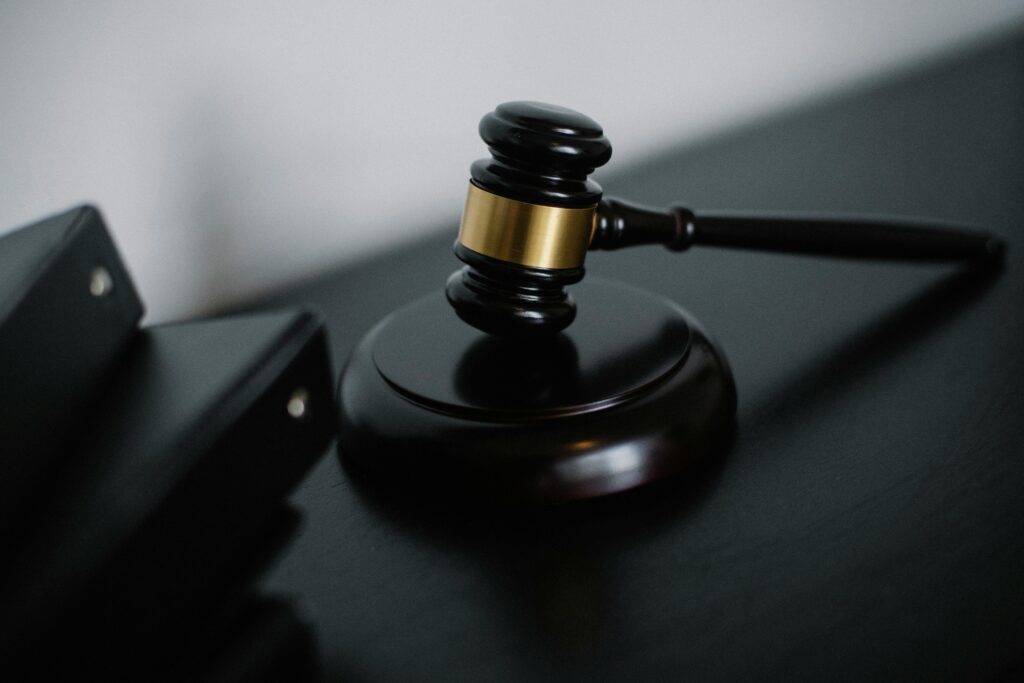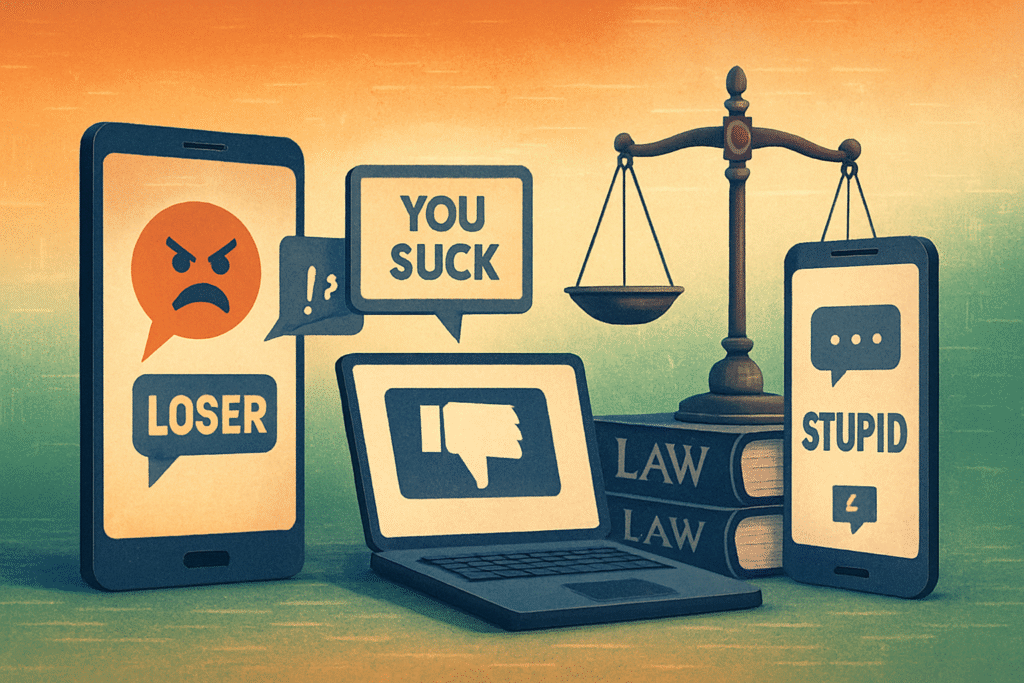Published on: 04th October 2025
By: Revant Upadhyay
Aligarh Muslim University
Case Title
Navtej Singh Johar & Others v. Union of India
Citation
(2018) 10 SCC 1
Court
Supreme Court of India
Bench
Dipak Misra (CJI), A.M. Khanwilkar, Dr. D.Y. Chandrachud, R.F. Nariman, and Indu Malhotra, JJ.
Date of Judgment
6 September 2018
Relevant Statutes/Key Provisions
- Section 377 of the Indian Penal Code, 1860
- Articles 14, 15, 19(1)(a), and 21 of the Constitution of India
Brief Facts
Navtej Singh Johar, a renowned Bharatnatyam dancer and member of the LGBTQ+ community, along with four others including Ritu Dalmia, Aman Nath, and Sunil Mehra, filed a writ petition under Article 32 of the Constitution before the Supreme Court in 2016. The petition challenged the constitutionality of Section 377 of the IPC, which criminalized consensual sexual acts between adults of the same sex[1].
The petitioners argued that Section 377 was archaic, discriminatory, and violative of their fundamental rights guaranteed under the Constitution. They claimed that the provision infringed upon their rights to equality (Article 14), non-discrimination (Article 15), freedom of expression (Article 19), and the right to life and personal liberty including privacy and dignity (Article 21).
This petition came in the backdrop of earlier litigation. In 2009, the Delhi High Court had in Naz Foundation v. NCT of Delhi decriminalized consensual homosexual activity between adults. However, in 2013, the Supreme Court reversed this in Suresh Kumar Koushal v. Naz Foundation, reinstating Section 377 in its full effect. The present petition was thus a fresh constitutional challenge brought by individuals directly affected by the law, rather than NGOs or third parties[2].
Notably, the petitioners also highlighted that the law had been misused as a tool of harassment by police and other authorities. The fear of criminal prosecution forced many from the LGBTQ+ community to live in the shadows, deprived of even basic protections under the law. The lack of legal recognition for their relationships left them vulnerable to abuse, eviction, disinheritance, and blackmail, compounding the social stigma they already endured[3].
Issues Involved
- Whether Section 377 IPC, to the extent that it criminalizes consensual sexual conduct between adults of the same sex, violates Articles 14, 15, 19(1)(a), and 21 of the Constitution.
- Whether sexual orientation is an intrinsic element of personal identity and dignity and therefore protected under the right to life and personal liberty.
- Whether discrimination based on sexual orientation constitutes a violation of Article 15 which prohibits discrimination on the basis of sex.
- Whether the doctrine of constitutional morality should prevail over popular societal morality.
- Whether the reasoning given in Suresh Kumar Koushal v. Naz Foundation still holds good in light of subsequent constitutional developments, including the right to privacy judgment in Justice K.S. Puttaswamy v. Union of India[4].
Arguments
Petitioners’ Arguments: The petitioners submitted that Section 377 was a colonial-era law that no longer aligned with the present democratic and constitutional values of India[5]. They emphasized that the provision violated their dignity, autonomy, and freedom to express love and sexual identity. It criminalized their very existence and subjected them to continuous fear, harassment, and societal exclusion.
They argued that Section 377 is both overbroad and vague, penalizing not just homosexual acts but any non-procreative sexual act between consenting adults. They further contended that this provision failed the test of reasonable classification under Article 14, as it targeted a particular class of citizens without a valid objective.
Citing the judgment in Justice K.S. Puttaswamy v. Union of India, they argued that the right to privacy includes the right to sexual autonomy. Sexual orientation, being innate and immutable, is a core component of identity protected by Article 21[6].
The petitioners also highlighted how Section 377 indirectly violated their right to freedom of expression under Article 19(1)(a), as it curtailed their ability to freely express their identities and relationships. They relied on international human rights jurisprudence that recognized sexual orientation as part of one’s identity, emphasizing that India, as a signatory to various human rights treaties, must uphold these global commitments[7].
Respondents’ Arguments: The Union of India, in its affidavit, took a neutral stance and left the matter to the wisdom of the Court. However, some religious and conservative intervenors argued in favor of retaining Section 377. They contended that the law did not single out any community but merely prohibited certain acts considered immoral by societal standards.
These intervenors emphasized the importance of preserving traditional family structures and public morality. They asserted that any amendment or repeal of Section 377 should come through legislative processes rather than judicial intervention. They also raised concerns about potential misuse of decriminalization in promoting homosexual culture which they claimed was against Indian values[8].
Judgment
The Supreme Court unanimously ruled that Section 377, to the extent that it criminalized consensual sexual conduct between adults, was unconstitutional[9]. The Court held that such criminalization violated the rights to equality, freedom of expression, and privacy of LGBTQ+ individuals.
Chief Justice Dipak Misra and Justice Khanwilkar, in their joint opinion, stressed the importance of constitutional morality as opposed to societal morality. They noted that society cannot dictate how individuals live their lives, especially when such conduct does not harm others. They emphasized that constitutional values must prevail over prejudiced social norms[10].
Justice Nariman concurred, declaring that Section 377 created an unreasonable classification that was not based on any intelligible differentia. He ruled that sexual orientation was a deeply embedded part of identity, and criminalizing it amounted to gross discrimination[11].
Justice Chandrachud highlighted the psychological trauma, social ostracization, and persecution that LGBTQ+ persons had to face due to Section 377. He also condemned the reasoning in Koushal, particularly the observation that LGBTQ+ people constituted a “minuscule minority,” stating that fundamental rights are not contingent upon the number of people who exercise them[12].
Justice Malhotra, in her separate opinion, emphasized that history owed an apology to the LGBTQ+ community for the decades of injustice, stigma, and discrimination they faced. She clarified that homosexuality is not a mental disorder and that consensual sexual acts in private fall within the domain of personal liberty.
The Court retained the applicability of Section 377 in cases involving non-consensual acts, acts involving minors, and bestiality.
Ratio Decidendi
The core legal principle emanating from the judgment is that sexual orientation is a natural and immutable aspect of an individual’s identity and is protected under the right to life and liberty guaranteed by Article 21[13]. The criminalization of consensual same-sex acts among adults violates Articles 14, 15, and 19 as well.
The Court established that discrimination based on sexual orientation amounts to discrimination based on sex, which is prohibited under Article 15. It further held that fundamental rights are not subject to popular morality and that the judiciary has a duty to uphold constitutional morality.
The judgment clarified that constitutional morality, based on the foundational values of liberty, dignity, and equality, must prevail over societal norms which often perpetuate prejudices and stereotypes. The Court’s interpretation empowered the judiciary to safeguard minority rights even in the face of majoritarian sentiment [14].
Obiter Dicta
Several judges made important observations that, while not forming part of the ratio, added significant value. Justice Chandrachud discussed the importance of acknowledging the lived experiences and struggles of LGBTQ+ individuals. He remarked that invisibilization is a form of oppression and that the Constitution must protect minority voices [15].
Justice Malhotra observed that popular morality or societal disapproval cannot be the basis to infringe fundamental rights. Justice Misra highlighted that love and intimacy are matters of individual autonomy and that the state has no authority to intrude upon such personal decisions.
Final Decision
The Supreme Court of India, through its unanimous and historic verdict, struck down Section 377 of the Indian Penal Code to the extent that it criminalized consensual sexual conduct between adults of the same sex conducted in private. The Court held that such criminalization amounted to a gross violation of the constitutional rights guaranteed under Articles 14, 15, 19, and 21. It declared that sexual orientation is an essential attribute of one’s identity and personal autonomy and that the State has no legitimate interest in intruding upon private acts between consenting adults that do not harm public order or morality in any tangible sense.
By doing so, the Court explicitly overruled the regressive precedent laid down in Suresh Kumar Koushal v. Naz Foundation, which had upheld Section 377 on the ground that only a “minuscule fraction” of the population was affected. The bench held that the number of individuals affected was irrelevant when it came to safeguarding fundamental rights. The judgment thereby restored the legal position that was previously articulated in Naz Foundation v. NCT of Delhi, wherein the Delhi High Court had read down Section 377 to exclude consensual homosexual acts among adults in private. That interpretation, briefly celebrated, had been curtailed by the Koushal decision, leading to years of legal uncertainty and continued marginalization of the LGBTQ+ community.
With this verdict, the Supreme Court did more than simply strike down a colonial-era penal provision—it ushered in a new era of constitutional morality, wherein the dignity, autonomy, and identity of sexual minorities were fully recognized under the law. The decision has been widely celebrated as one of the most progressive and transformative rulings in the history of Indian constitutional jurisprudence. It marked a resounding affirmation of the rights to privacy, equality, and individual liberty, thereby restoring the dignity, legal status, and equal citizenship of millions of LGBTQ+ persons across India who had for decades lived under the shadow of criminal prosecution and social exclusion. The judgment thus stands not only as a legal victory but as a powerful symbol of inclusion, compassion, and constitutional justice.
[1] Navtej Singh Johar v. Union of India, (2018) 10 SCC 1 (India).
[2] Justice K.S. Puttaswamy (Retd.) v. Union of India, (2017) 10 SCC 1 (India).
[3] Naz Foundation v. Govt. of NCT of Delhi, 160 DLT 277 (Del. HC 2009) (India).
[4] Gautam Bhatia, Equal Moral Membership: Naz Foundation and the Refounding of Constitutional Interpretation in India, 1(1) Indian L. Rev. 115 (2017).
[5] Suresh Kumar Koushal v. Naz Foundation, (2014) 1 SCC 1 (India).
[6] Dipak Misra C.J., Navtej Singh Johar v. Union of India, (2018) 10 SCC 1, para 253 (India).
[7] Ibid at para 239.
[8] R.F. Nariman J., Navtej Singh Johar v. Union of India, (2018) 10 SCC 1, para 332 (India).
[9] Indu Malhotra J., Navtej Singh Johar v. Union of India, (2018) 10 SCC 1, para 437 (India).
[10] D.Y. Chandrachud J., Navtej Singh Johar v. Union of India, (2018) 10 SCC 1, para 403 (India).
[11] Arvind Narrain, The Queer Constitutional Moment, 9 NUJS L. Rev. 45 (2016).
[12] Bhatia, supra note 4, at 127.
[13] Tarunabh Khaitan, Reading Swaraj into Article 15: A New Deal for Indian Gay Rights, 8(4) Asian J. Comp. L. 55 (2013).
[14] Danish Sheikh, Queer Constitutionalism: The Case of Section 377, 8 Indian J. Const. L. 57 (2018).
[15] Indian Express, Supreme Court Reads Down Section 377: Highlights of the Verdict, Sept. 6, 2018, https://indianexpress.com.


